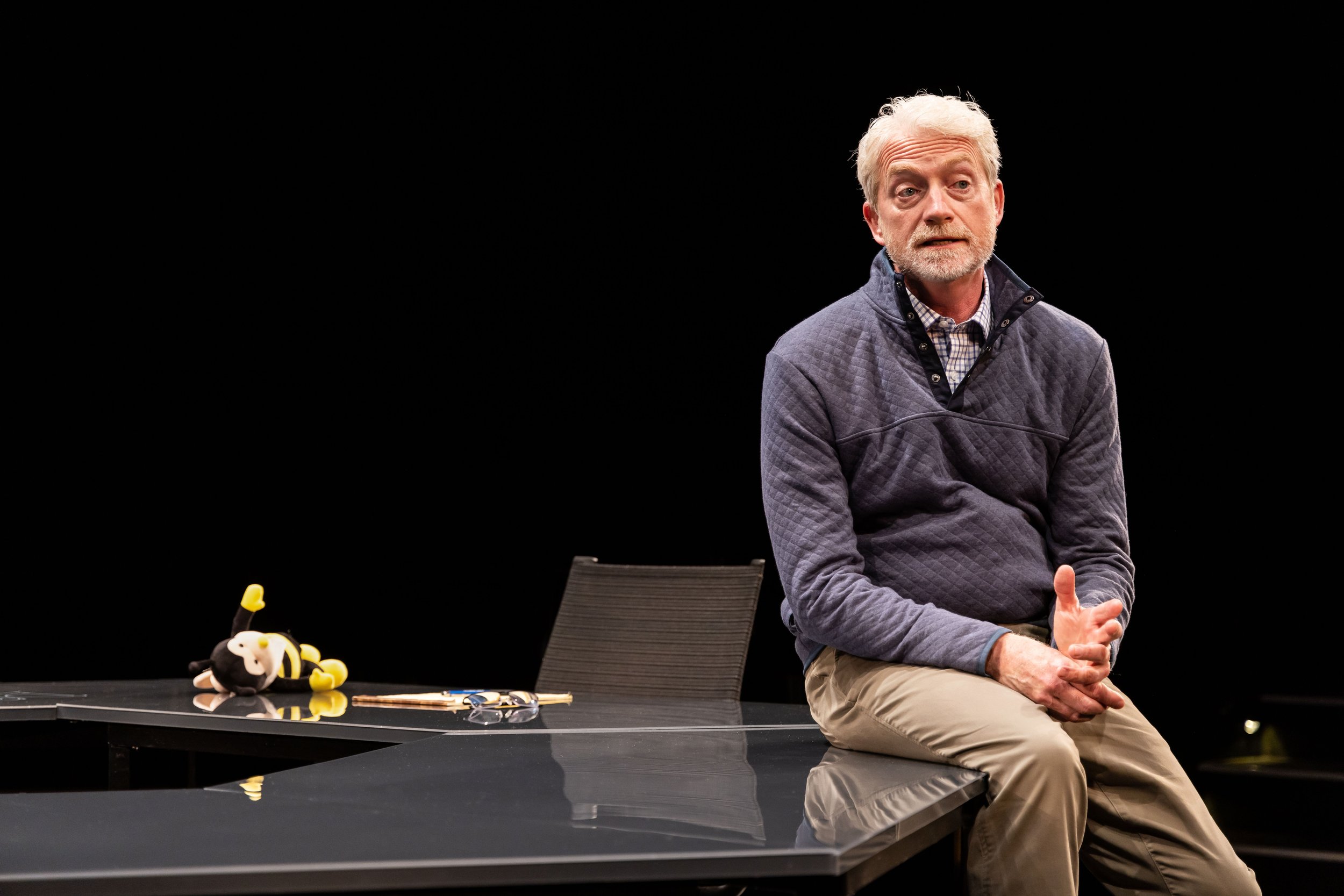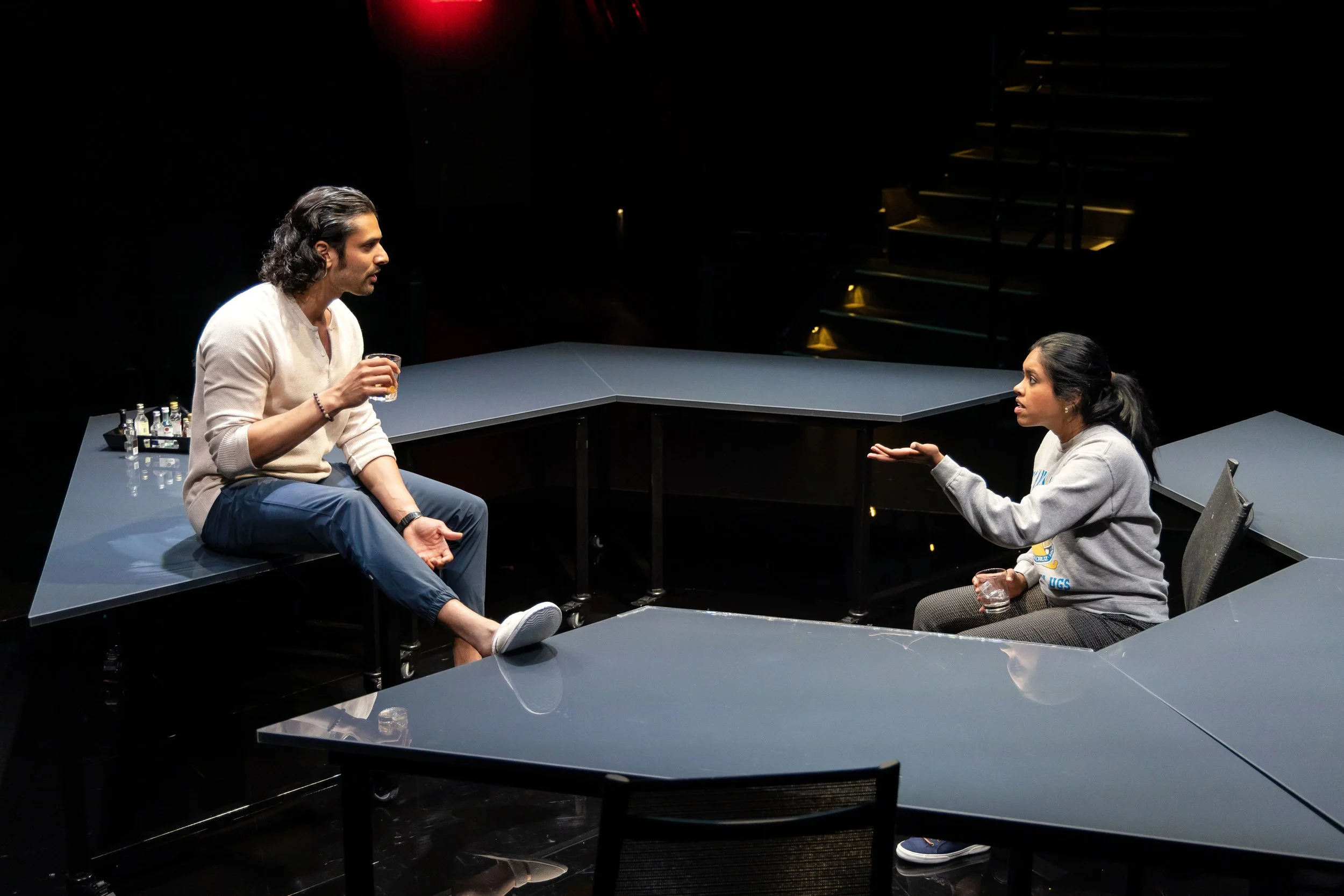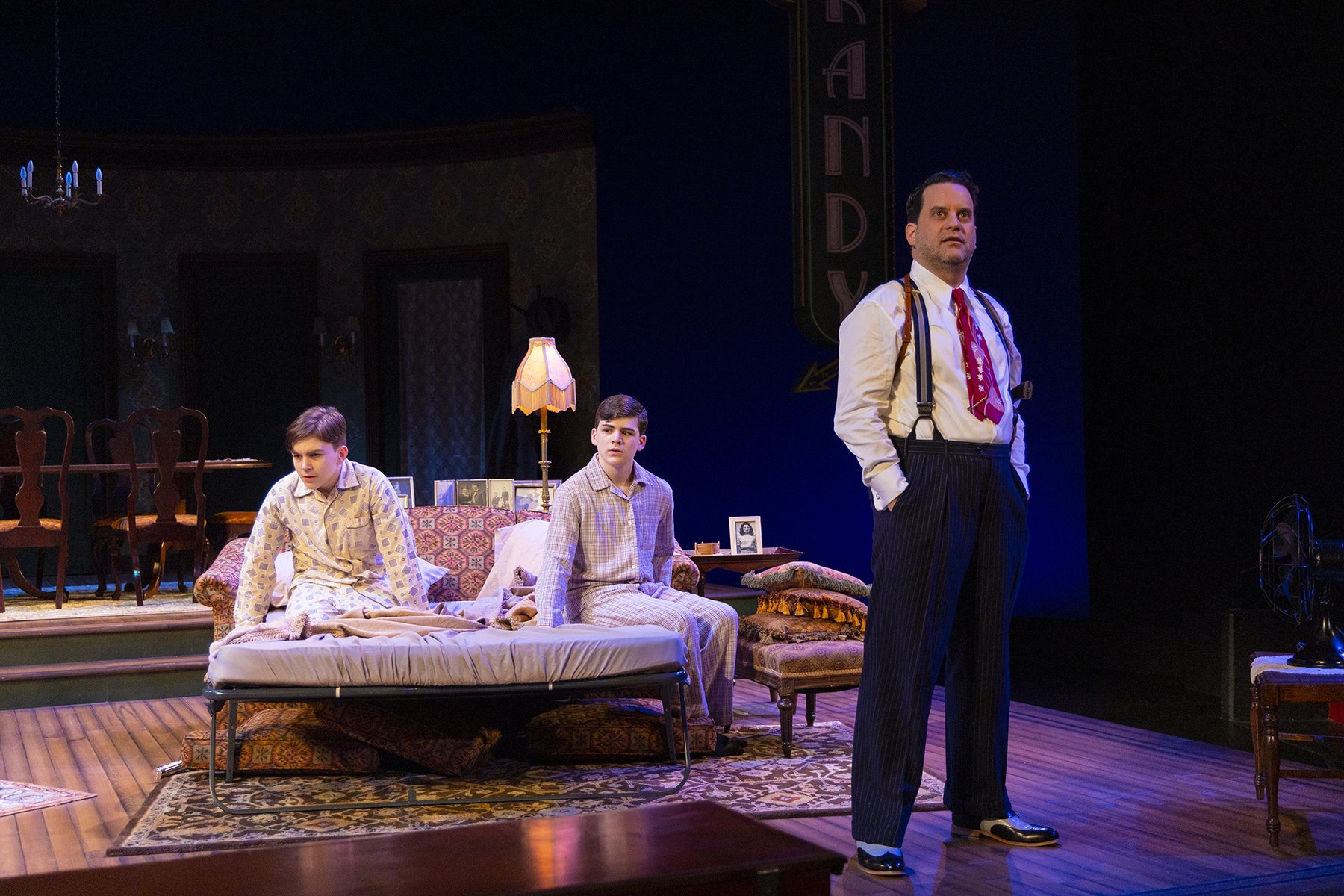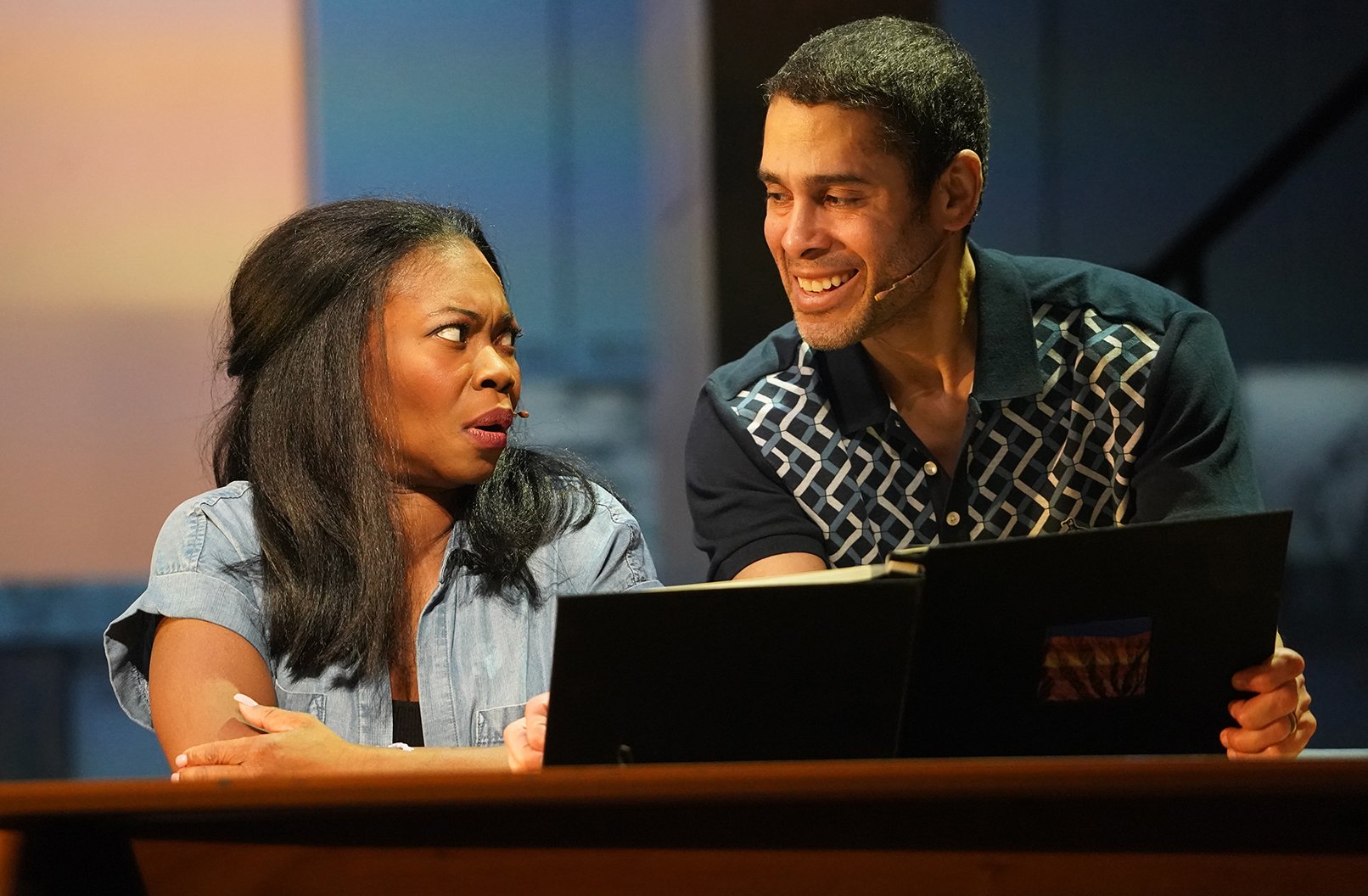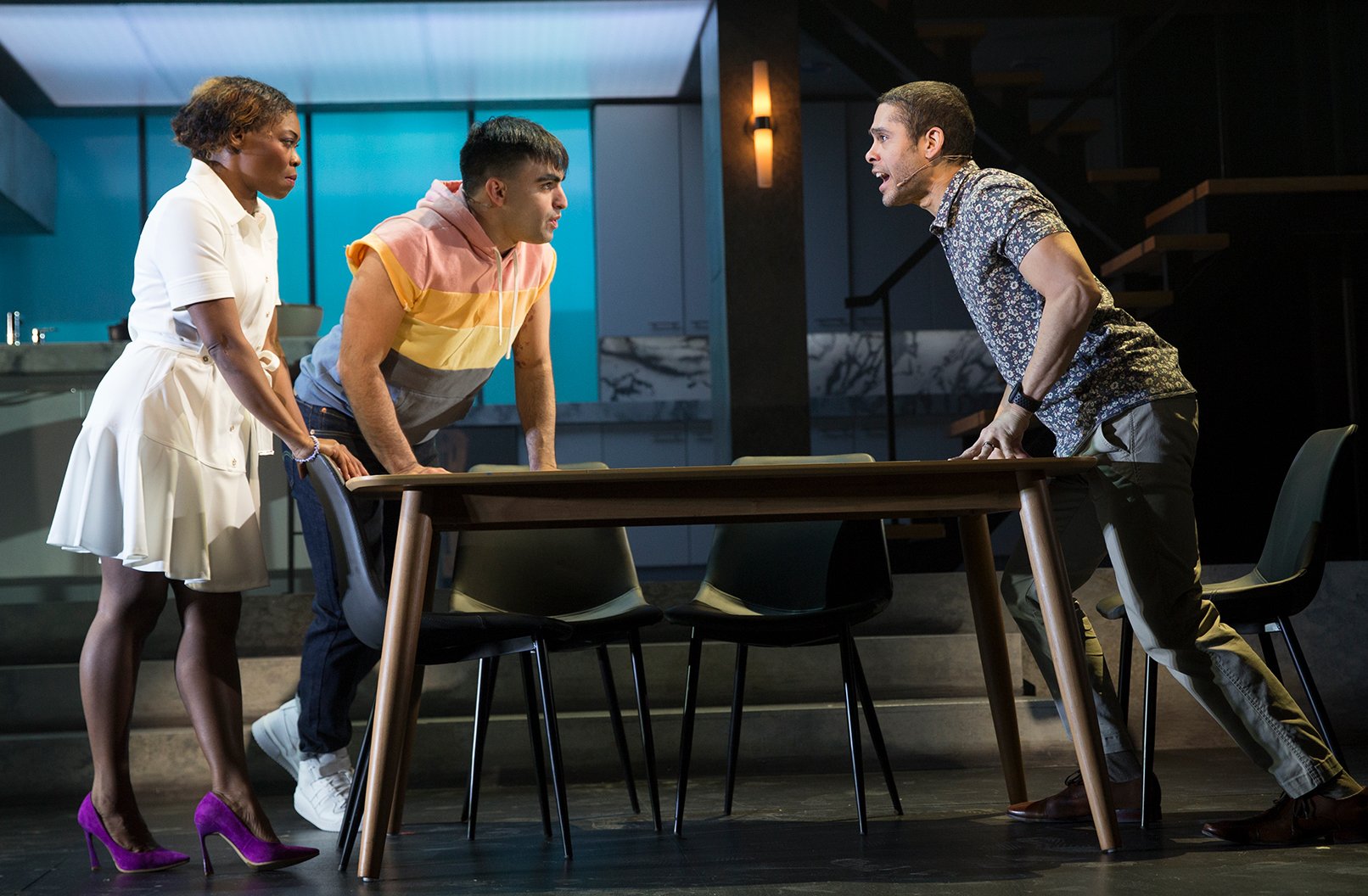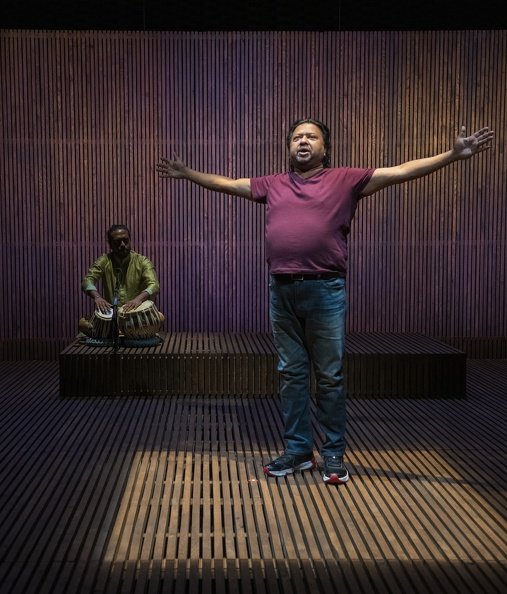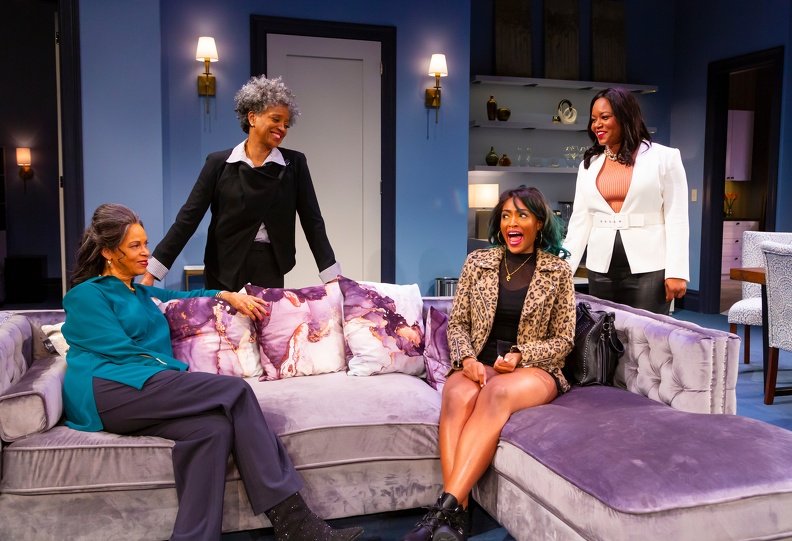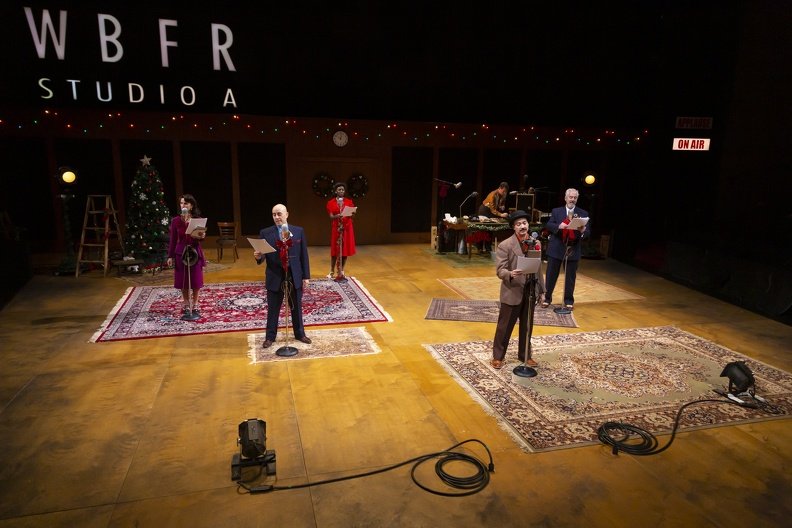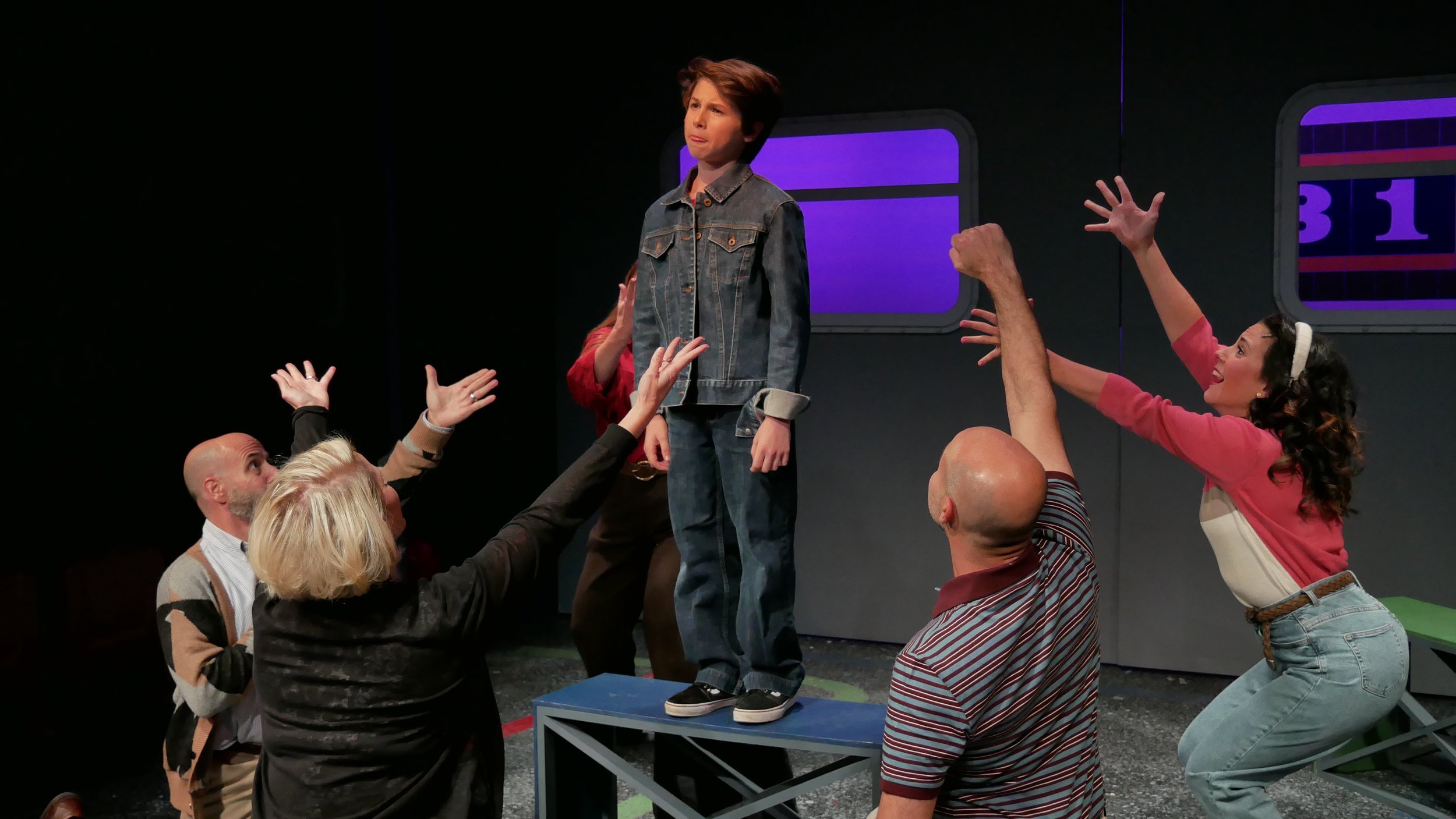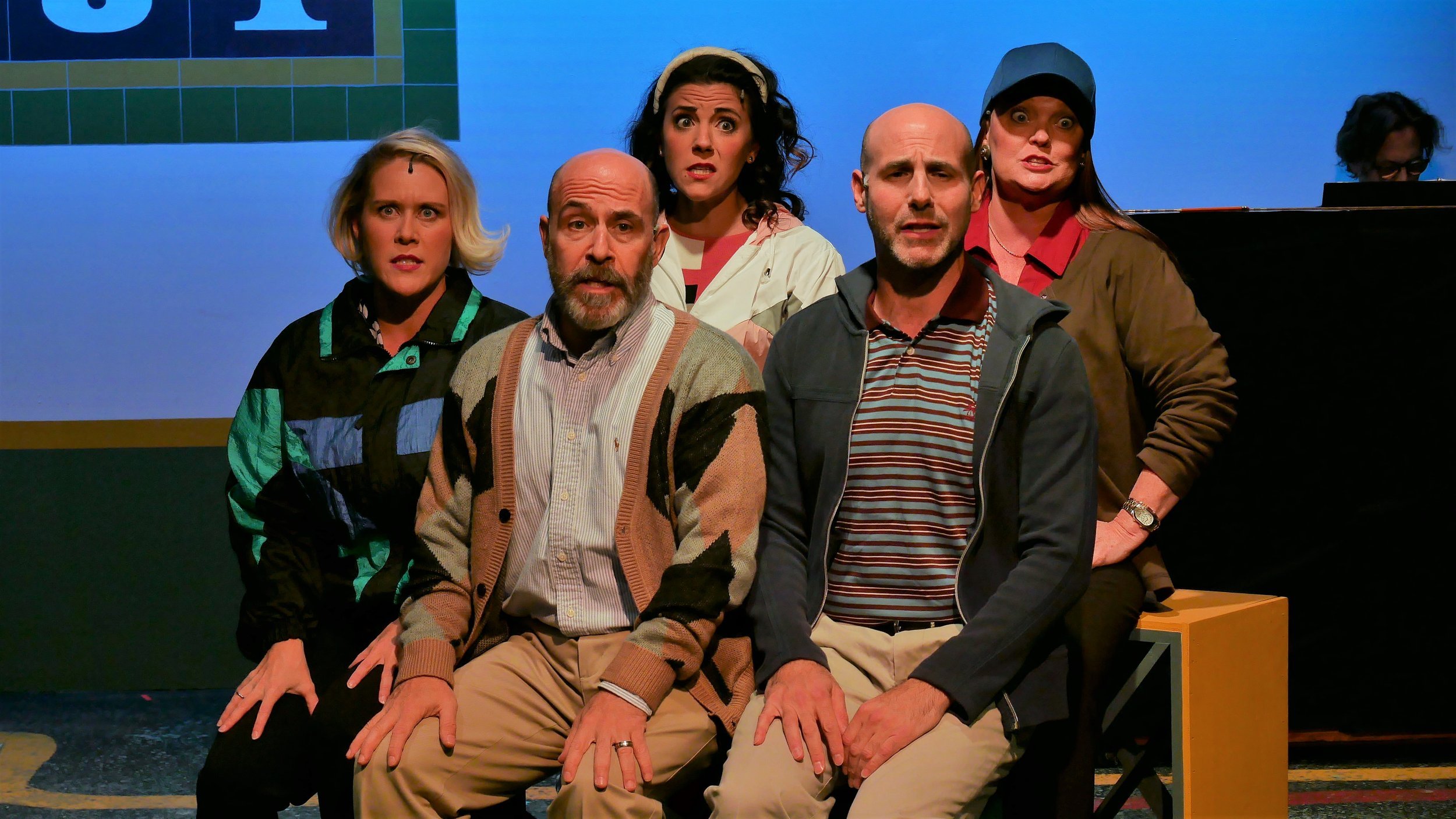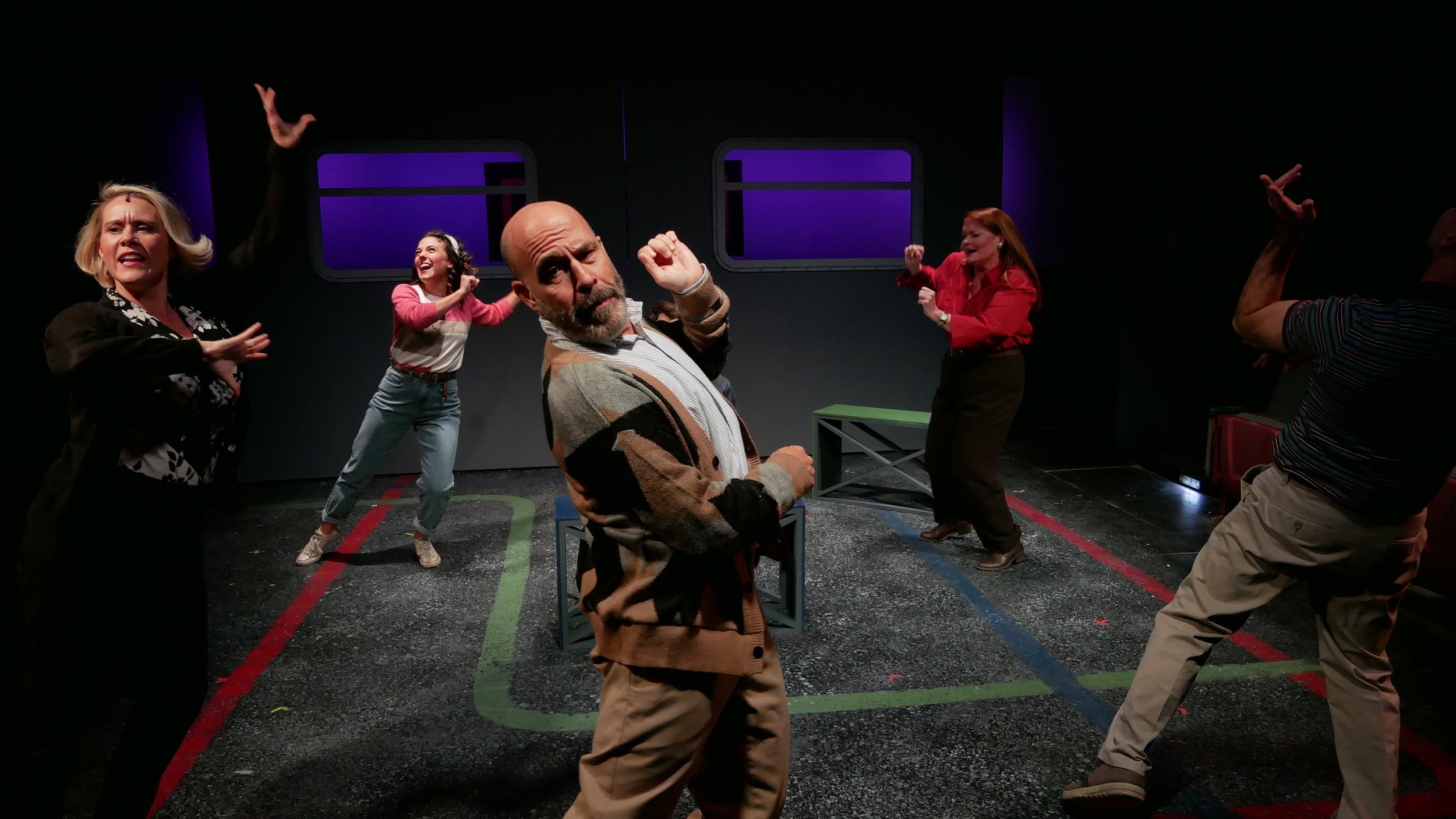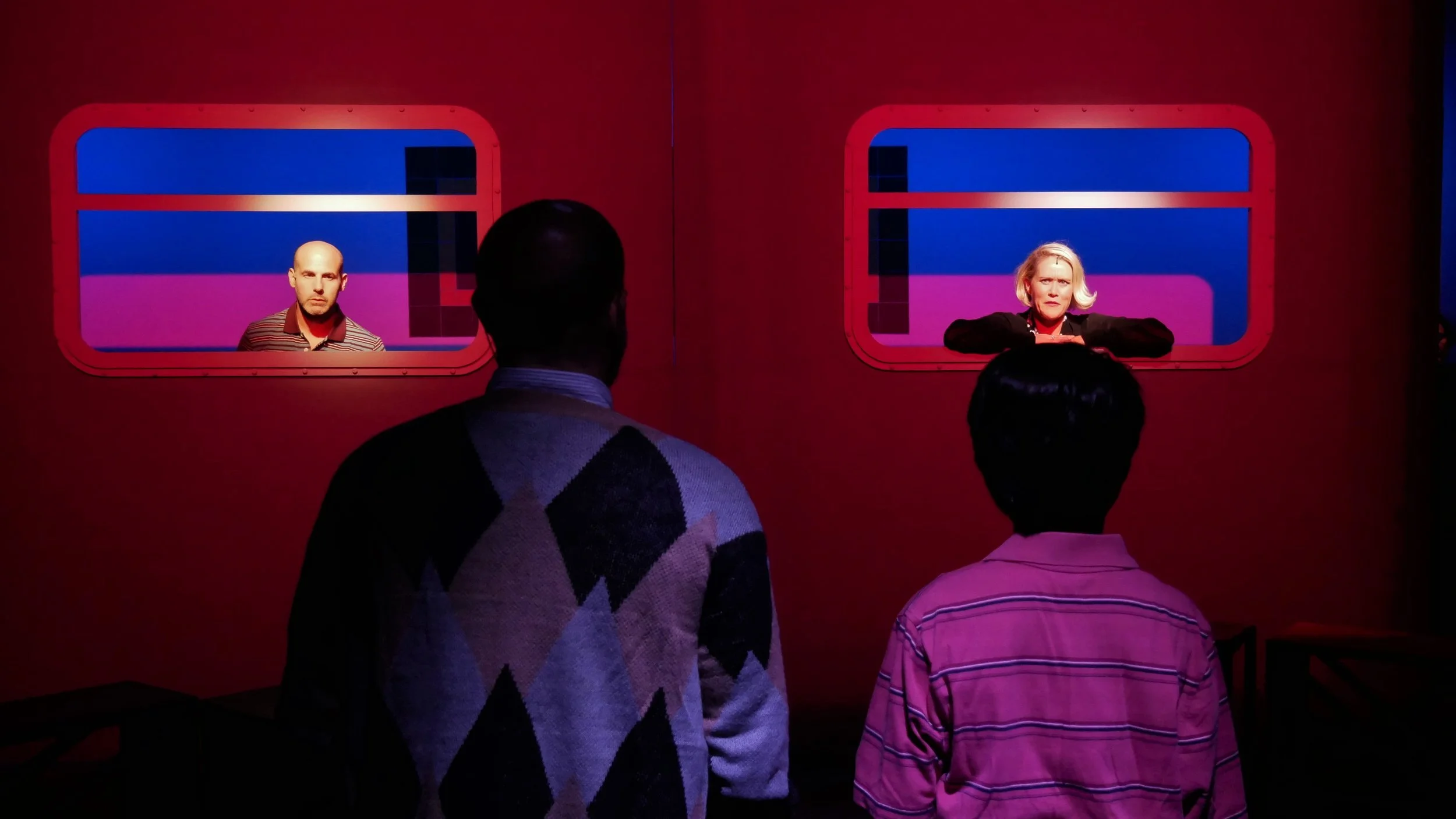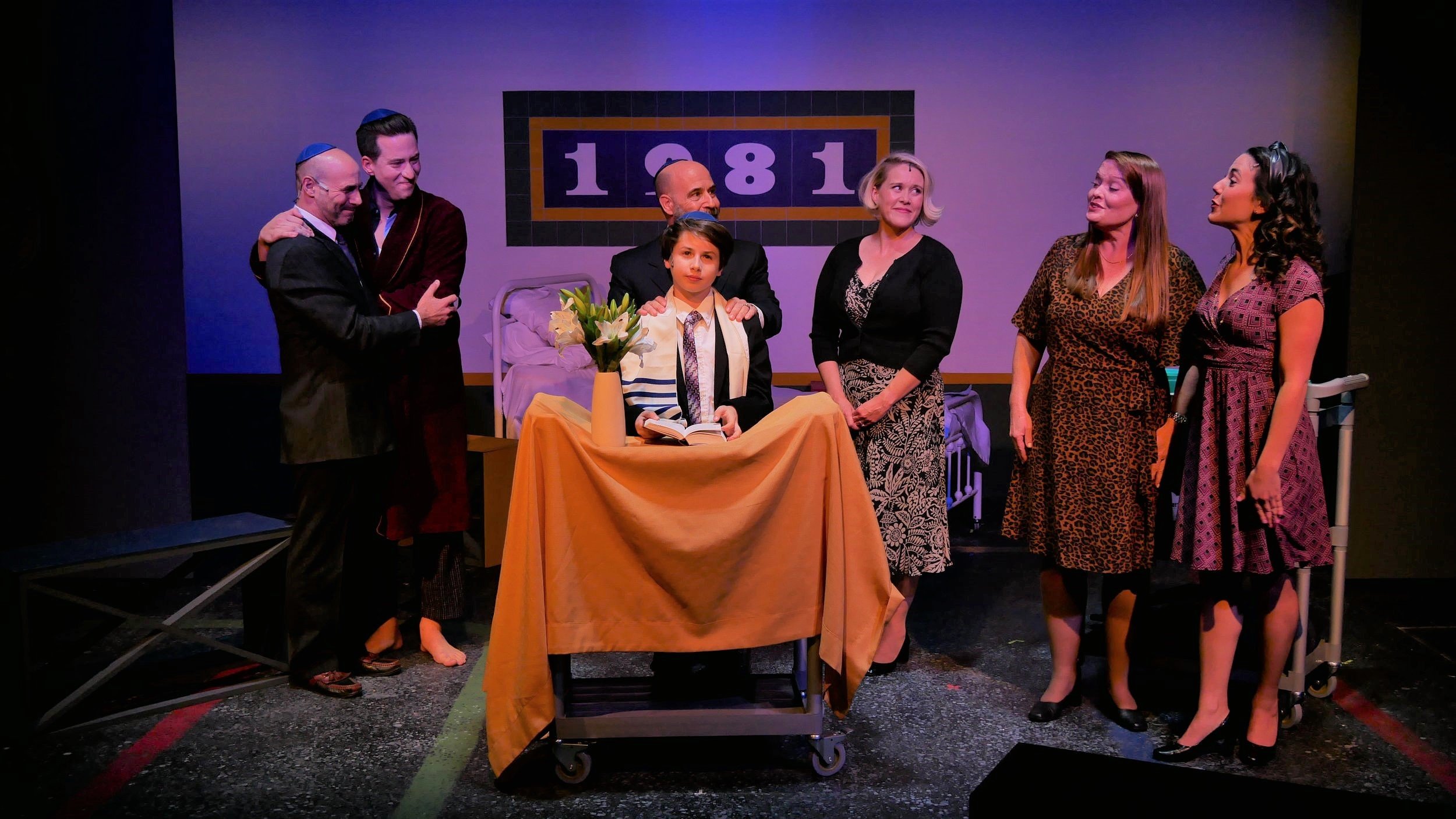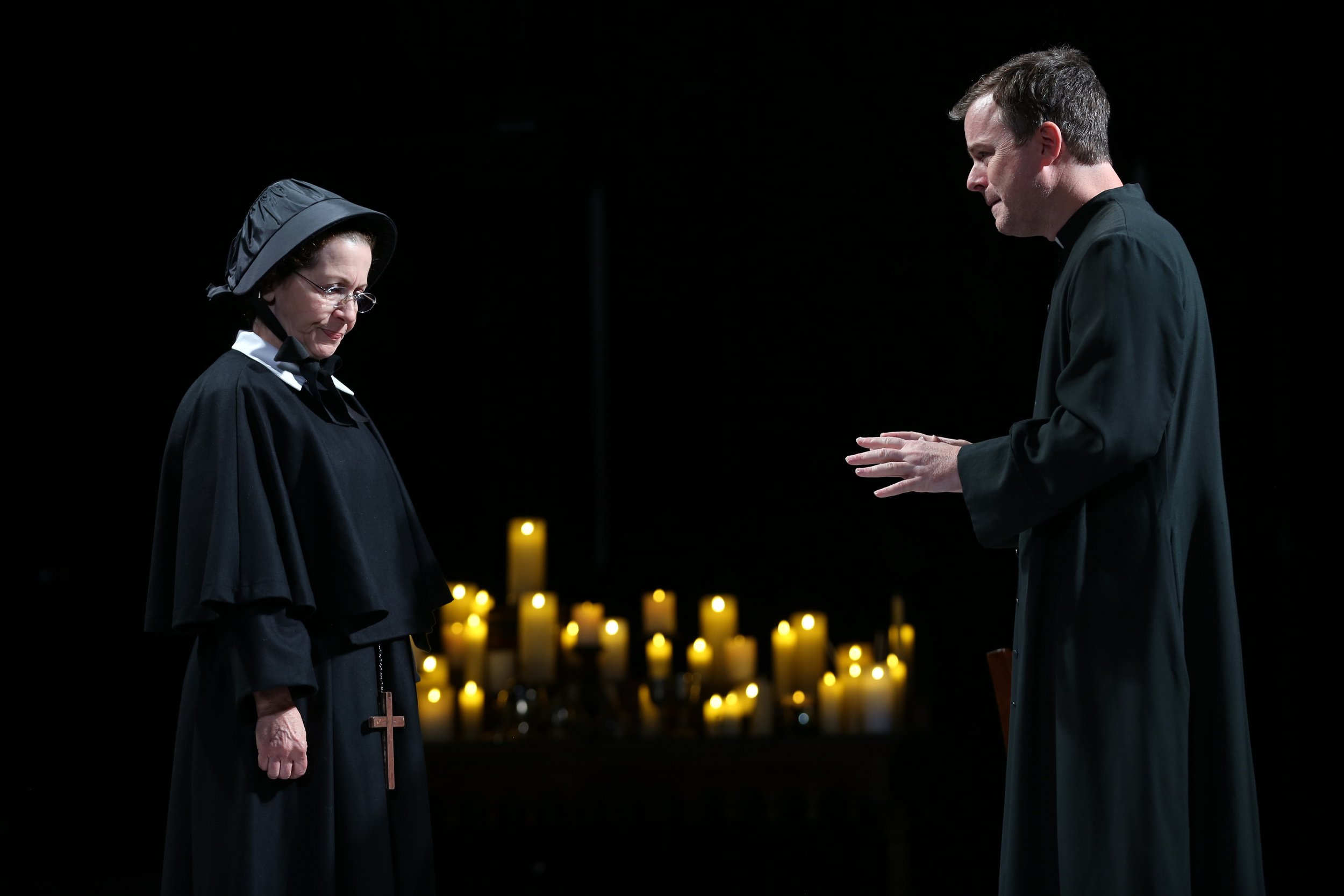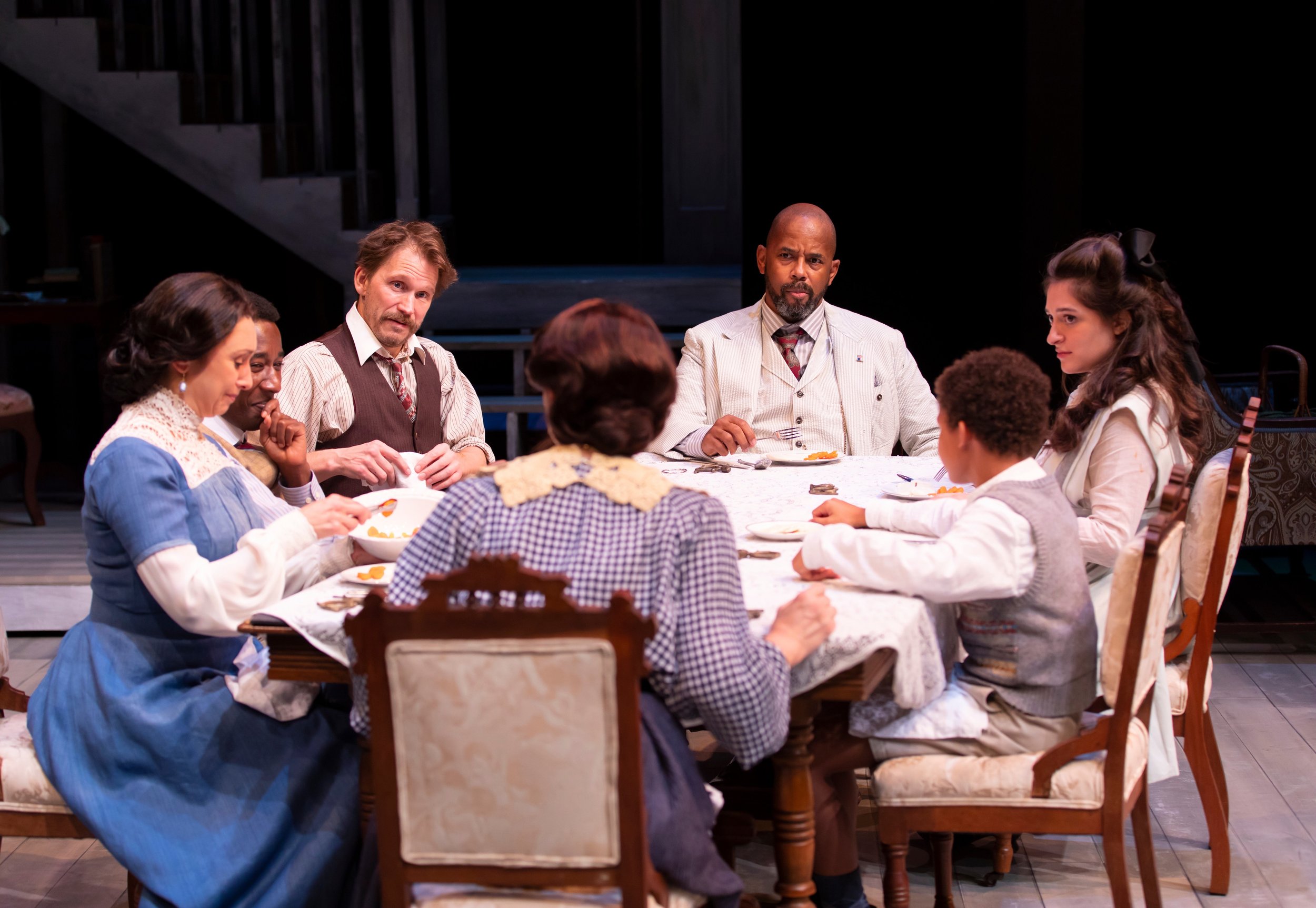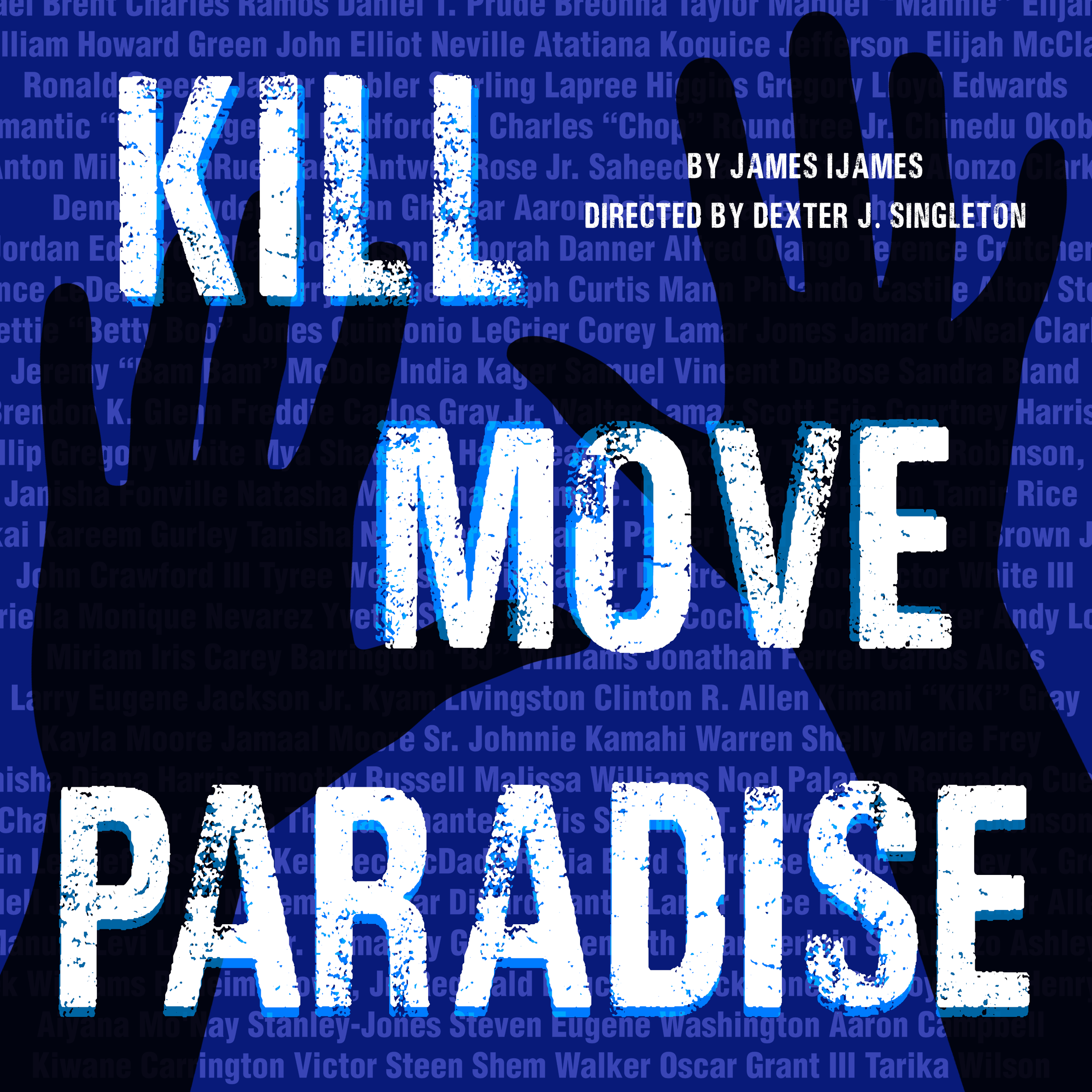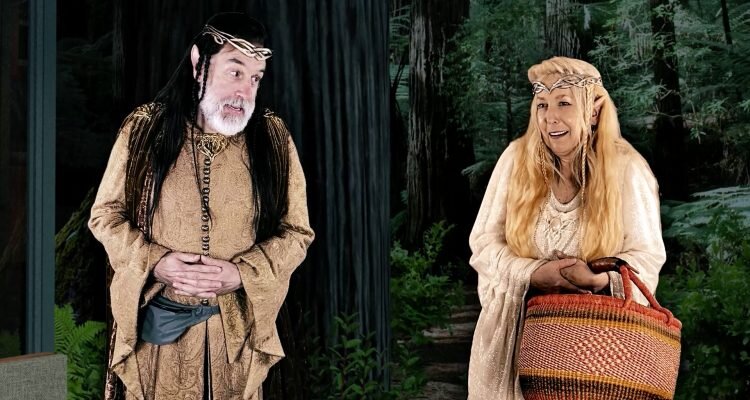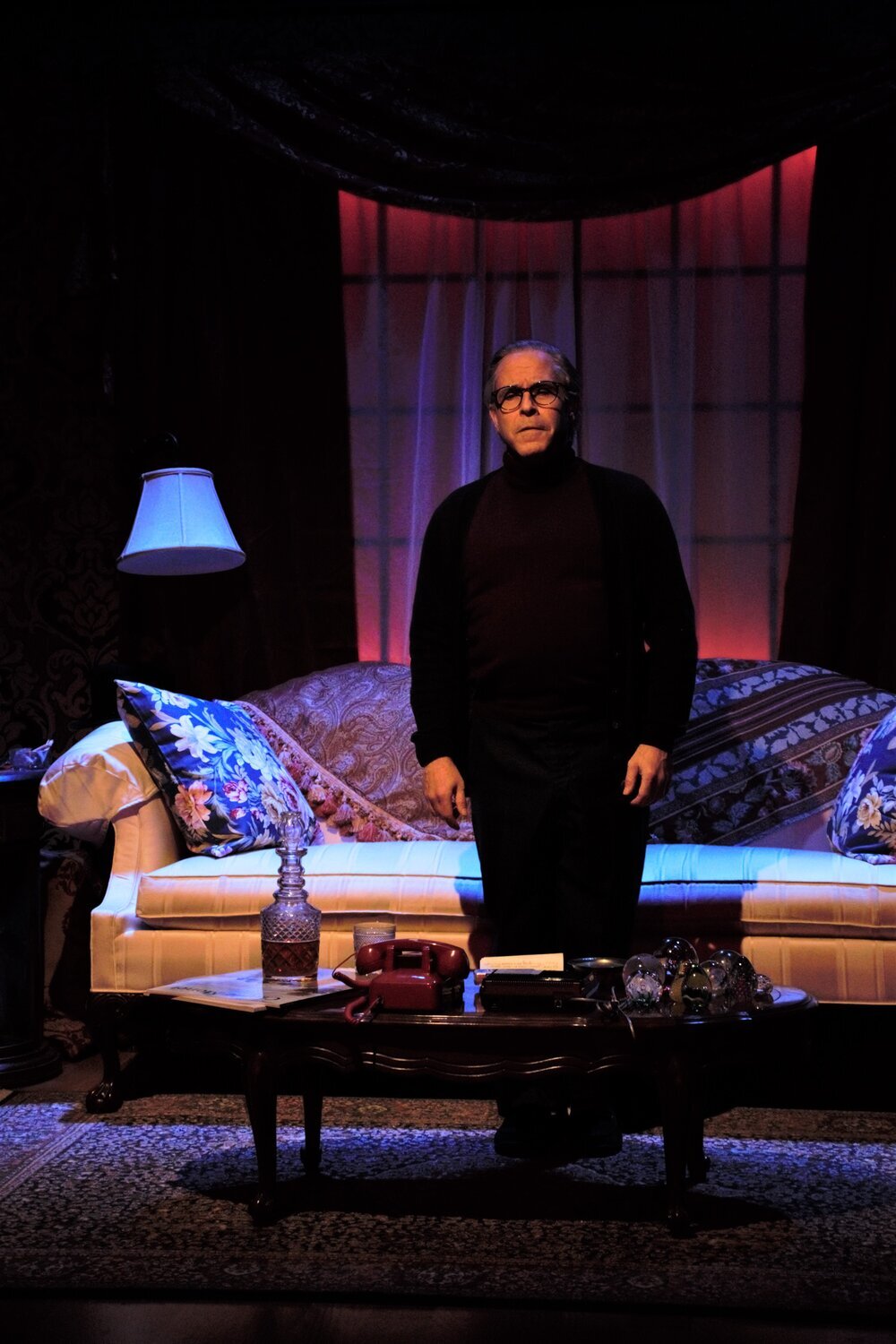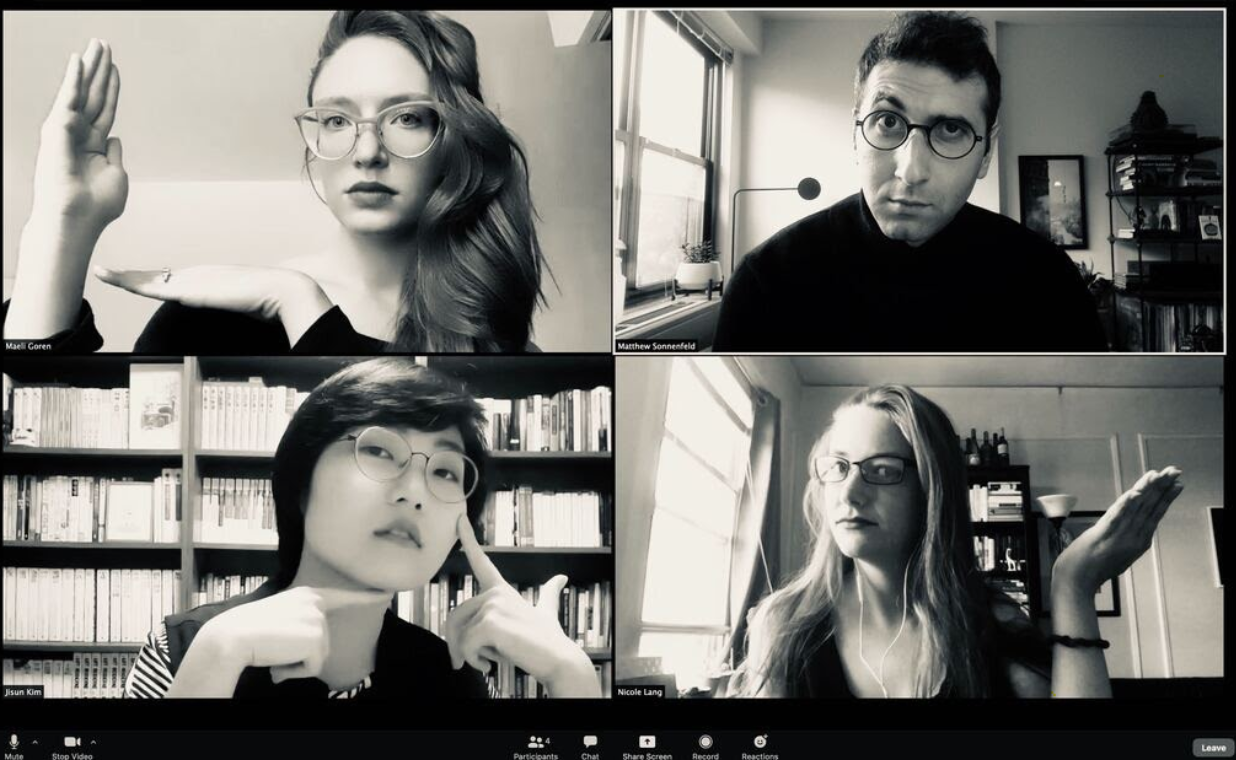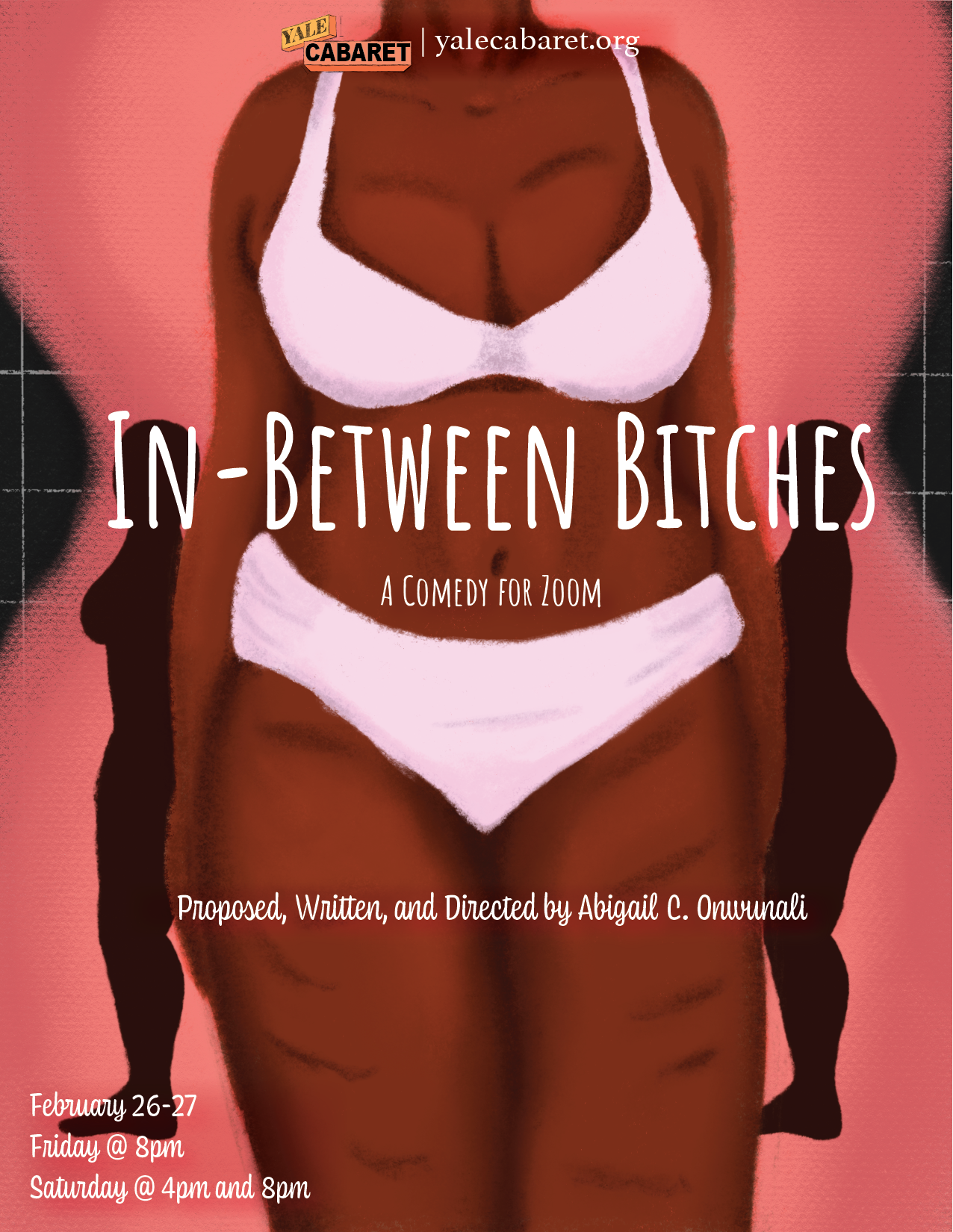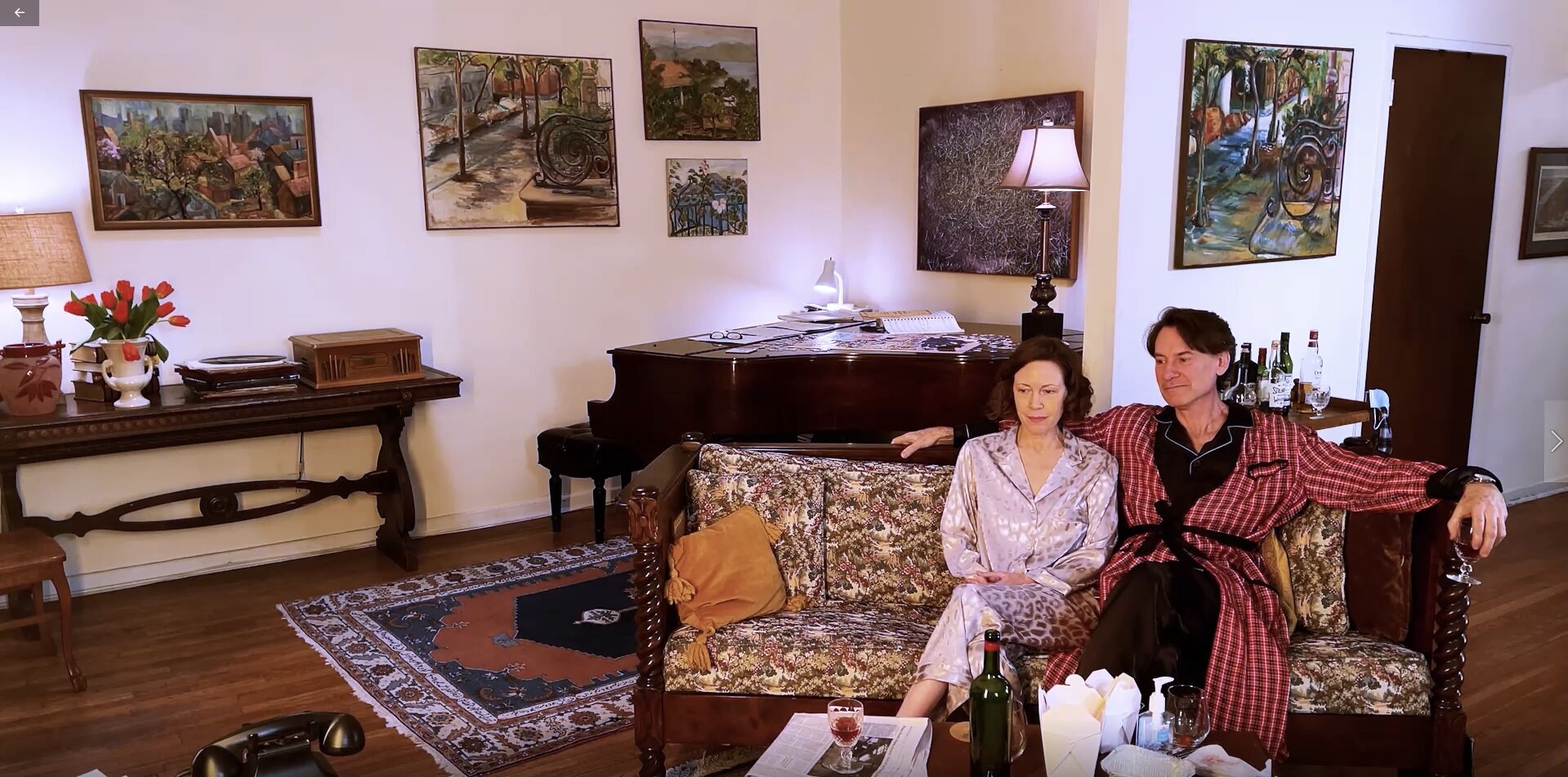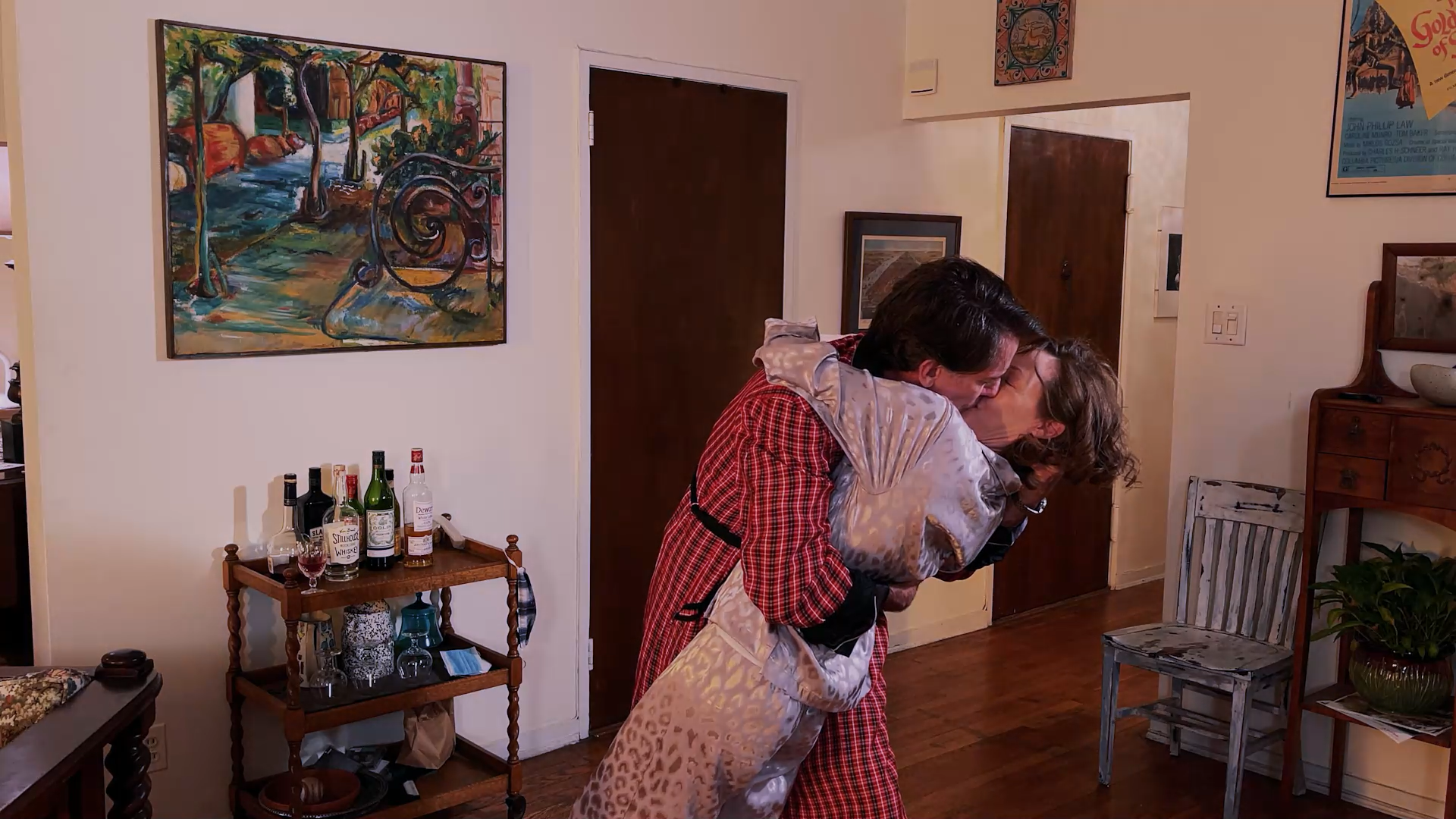Review of Kim’s Convenience, Westport Country Playhouse
The set is an incredibly lifelike convenience store by scenic designer You-Shin Chen. Before the action began I sat admiring the three vents that run across the heating/a-c duct above the store. Those vents didn’t look fake or new; they looked the way the vents would look: worn, serviceable. Into the store walks Appa (David Shih) and his manner isn’t of someone trapped in a place he’d like to get out of. It’s his domain. He pours himself a coffee and settles into whatever the day brings on. This is a story about how things look to this man, a character study of a working man the playwright knows well.
Heart-warming and amusing, Ins Choi’s Kim’s Convenience, playing at Westport Country Playhouse through July 17, is like a friendly local spot you’re happy to visit. The play, which spawned a CBC sitcom in 2016 that ran for five seasons and is available on Netflix, has features you’ll immediately recognize from other popular shows: the work-place—here, the store—that unites most of the action, the family dynamic of intergenerational dysfunction, and the immigrant experience—in this case of Koreans to Canada (the convenience store is located in Toronto)—as mixing both ethnic specificity and the collective features of how strangers become neighbors. It’s familiar, but with a difference.
Chuja Seo as Umma, David Shih as Appa in Kim’s Convenience, directed by Nelson T. Eusebio III, at Westport Country Playhouse (photo by Carol Rosegg)
Indeed, you could easily reduce the story to its types: the bossy patriarch and his flustered wife (known only as Appa and Umma (Chuja Seo), to underscore that this is a Mom and Pop store), the potentially slacker daughter now turning thirty, still at home, unattached and vaguely a photographer (Janet, played by Cindy Im), the miscreant son (Jung, played by Hyunmin Rhee) who ran off after a physical altercation with Appa and whose whereabouts only Umma knows. Add a number of small “community figure” roles and Alex, a possible love interest from the neighborhood—all played by Eric R. Williams—and you’ve got the potential for any number of vignettes about how these folks get by and what sort of problems they meet with.
At the center of it all is the man who keeps the store, a figure who exemplifies the very notion of upwardly mobile merchant. Early in the play, a local wheeler-dealer (Mr. Lee—known approvingly as “the black man with the Korean name”) makes a big offer to buy the store, but it’s not about moving on up for Appa. It’s about his need to have “a story,” or, as we might say, “an identity.” Without the store, which he needs to hand on intact, there’s no public role for his life.
The key, for entertainment value, is how this character comes across. If too sentimental, we’ll get bored; if too silly, we’ll not take him seriously. The laughter is not only at Appa—the way we laugh at misguided dads from Archie Bunker to Homer Simpson—but with him as we notice how much he notices. And the sentiment is earned by the way we gradually become aware of how heartfelt his world is.
David Shih as Appa, Cindy Im as Janet in Kim’s Convenience, Westport Country Playhouse (photo by Carol Rosegg)
And of course there are life lessons along the way: the main one being that everyone in this play (and in the world the play wants to mirror) have stories just as heartfelt. All the characters want to get along with the others, but they also want something—mostly we could call it “respect,” or “appreciation,” or just the sense of fellow feeling that means someone else understands. And that’s what you’re mainly investing in watching such a play: your understanding. The showdown between Appa and Janet over who owes whom what is one of those universal parent-child situations even if it doesn’t always come to such deliberate expression. As a scene, it’s a well-done dramatic crux. Matched at the close by Appa’s test of his repentant son.
Hyunmin Rhee as Jung, Chuja Seo as Umma in Kim’s Convenience, Westport Country Playhouse (photo by Carol Rosegg)
Director Nelson T. Eusebio III has his cast use this space extremely well. It never feels stagey or trapped in a fake space. The two scenes outside the store have a different feel as they should. In one Umma visits with Jung in a church and it’s striking how worldly this woman, who speaks mostly Korean to her husband in his domain, suddenly seems. She’s part of a church and so of a different community, one not defined by family or trade. The other is a flashback to when Appa and pregnant Umma, newcomers to Canada, are trying to name the store. There are joke names—7-12—that show not only how Appa views success but how much he wants his brand to be recognizable. “Kim’s Convenience” says it all.
Most of the best scenes involve Appa and Janet. First of all, kudos to costume designer Lux Haac: her wardrobe makes Janet look cool and that helps us enter Appa’s world too. His daughter is nothing like her mother, nor like him, and yet he wants to help her make a life for herself, without really understanding what that might entail. The scenes when he “helps” negotiate the halting date relations between Janet and Alex are funny as physical comedy and blossoming romance together (Michael Rossmy, fight director and intimacy coach earns his keep) and play on the old tropes of the “shotgun wedding” in a way that lets us feel the force of family as an aspect of marriage.
Eric R. Williams as Alex, Cindy Im as Janet in Kim’s Convenience, Westport Country Playhouse (photo by Carol Rosegg)
Everyone puts in a good performance here: Chuja Seo’s cautiously supportive Umma, Hyunmin Rhee’s sympathetically put-upon Jung, Cindy Im’s mostly patient Janet, and Eric R. Williams’ slick businessman, flustered Islander, and shy but persistent Alex. Meanwhile, David Shih is a marvel. Choi’s dialogue calls for the heavily accented pronunciation and truncated syntax of the non-native speaker of English, particularly one converting from Korean, and Shih gets it all across with a nuanced command of how someone who speaks with conviction finds the means to make his meaning felt. It’s wonderful and often inadvertently (from Appa’s perspective) funny.
And the show’s comedy works because it’s broad enough, but with the recognition that all of us at times look or sound ridiculous and, when we do, we become cartoon characters in much the same way. And we also know—”this my serious face,” as Appa says—when our deepest values are at stake. Kim’s Convenience gets all that out into the open—for our convenience.
Hyunmin Rhee as Jung, David Shih as Appa in Kim’s Convenience, Westport Country Playhouse (photo by Carol Rosegg)
Kim’s Convenience
By Ins Choi
Directed by Nelson T. Eusebio III
Scenic Design: You-Shin Chen; Costume Design: Lux Haac; Lighting Design: Marie Yokoyama; Sound Design: Twi McCallum; Dialect Coaches: Zoë Kim, Bibi Mama; Fight Director/ Intimacy Coach: Michael Rossmy; Props Supervisor: Sean Sanford; Production Stage Manager: Megan Smith; Assistant Stage Manager/Fight Captain: Kevin Jinghong Zhu
Cast: Cindy Im, Hyunmin Rhee, Chuja Seo, David Shih, Eric R. Williams
Westport Country Playhouse
June 5-17, 2022



















